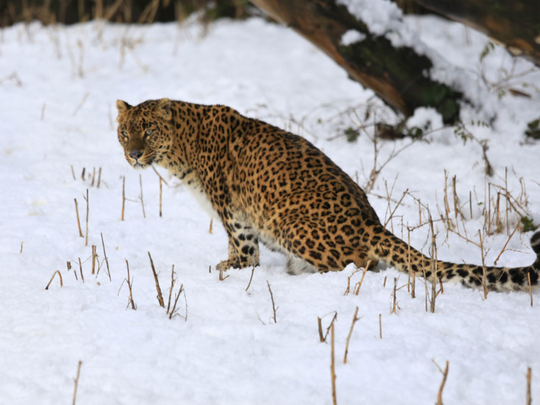
Himachal Pradesh: In the high altitude treeless expanses of Kibber, Himachal Pradesh, India, snow leopards use boulders and ridge lines to stalk blue sheep and Himalayan ibex. But they also feast on yak calves and horse foals, much to the chagrin of villagers. These animals fetch a pretty penny, and the compensation paid by the state was so measly that livestock owners didn’t even bother to file claims.
Had nothing been done to resolve the problem, people’s hostility to snow leopards could have turned volatile.
After studying the situation, scientists at Nature Conservation Foundation (NCF), Karnataka, came up with a couple of ideas. Since livestock overran the pastures, wild ungulates were too few to sustain snow leopards. If people’s losses were to be reduced, the population of wild prey animals had to increase.
In 2001, NCF entered an agreement with the residents of Kibber to set aside part of their pastures where livestock would not be allowed to graze. To make up for the loss of grazing land, the foundation paid £290 (Dh1,539) per year to lease 500 hectares (1,235 acres) of pastures. At least on this parcel of land, blue sheep and ibex don’t have to compete with domestic animals.
A year later, the foundation started a livestock insurance programme so villagers could be reimbursed for their losses.
Villagers decided how much annual premium they would pay for each kind of animal. Once premiums are collected every year, the foundation donates one and a half times that amount to create the capital.
There was one rule: the total insurance to be paid in a year could be no more than 60 per cent of the capital. When a snow leopard killed a calf or foal, a two-member team inspects the carcass to make sure the owner isn’t gaming the system. If the case is deemed genuine, the affected person receives the insured amount.
Shift in pattern
In addition, a shift to growing high-value green pea crops, rather than traditional barley, has required additional manpower. As a consequence villagers have cut back on the size of their herds of sheep and goats.
With fewer animals to compete with, and a dedicated grazing area, blue sheep numbers tripled within three years.
Snow leopards responded by attacking fewer domestic animals. In 2004, the village increased the reserve to 1,500 hectares (3,700 acres). Increasing wild herbivore numbers brought another kind of problem: damage to crops.
NCF hired a couple of farmers to shoo away the animals when they ventured close to the fields. Although this method is successful in other villages, the guards in Kibber weren’t too eager to do the job.
Next year, the conservationists plan to hire more energetic candidates and also test temporary solar electric fences at the critical times in the growing season. Anticipating changes and putting mechanisms in place to benefit wildlife without any cost to villagers is a vital part of the snow leopard conservation, and not just in India — it’s being trialled in other snow leopard countries as well.
— Guardian News & Media Ltd












